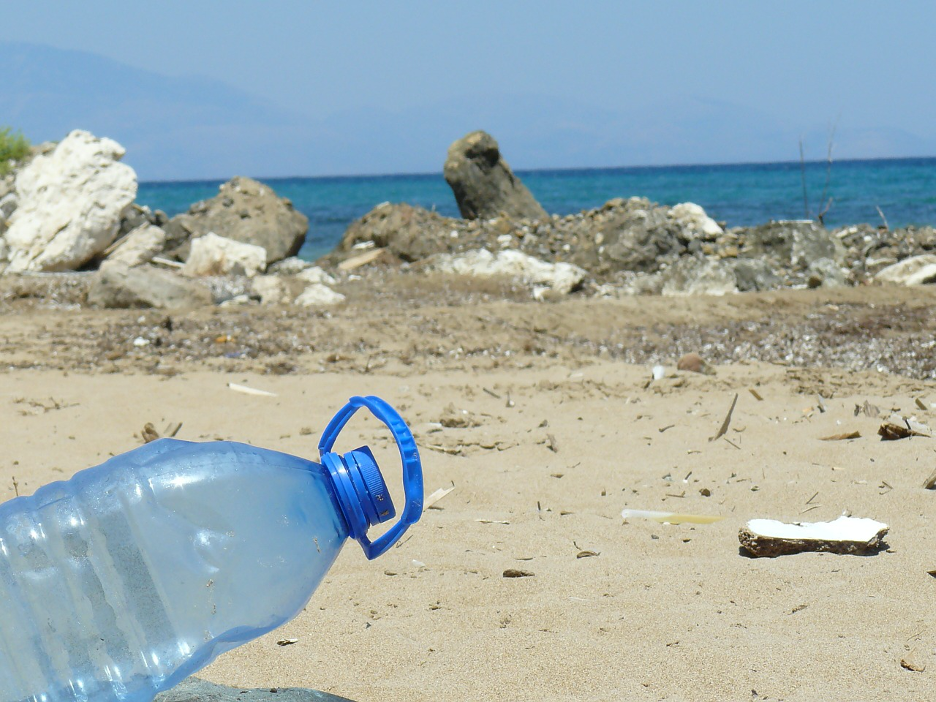What Tourists Need to Do to Reduce Plastic Waste
By Sally Hunts for Plastic Ethics
Despite a greater focus on climate action in much of the world, plastic pollution is getting worse. This is particularly true in our oceans, where our research on how to ‘Break the Plastic Wave’ noted that plastic flow could triple by 2040.
This particular problem — not just plastic pollution, but plastic floor into the oceans — speaks to how much of a role tourists play in making this problem worse. Just a couple years ago, in fact, The Travel Magazine looked into tourist pollution and found that at least in the Mediterranean, tourists were contributing roughly 40% of all plastic waste flowing into the sea. This gives us an indication that in areas popular among travelers, visitors — rather than year-round residents — are responsible for nearly half of plastic waste.
This is not a point we make to shame tourists by any means, but rather to point out that more responsible tourism is an essential factor in addressing the problem. Our aforementioned report, suggesting a tripling in plastic waste flow by 2040, also noted that immediate action could “stem the tide” by more than 80%! That means that tourists who decide to be part of the solution in their own travels can make a significant impact on ocean cleanliness. If we can reshape how travellers think about plastic consumption and waste, in fact, it may well save the oceans.
As to how specifically tourists can help, we have a few suggestions to consider….
MINIMISE SINGLE USE PLASTIC USAGE
It may sound like an obvious point, but the most significant way in which tourists can contribute is by minimising their plastic usage to begin with. This will cut down on waste during travel for the short term, and over the long term it may help to reduce reliance on plastic in general. If travellers simply aren’t using as many plastic products, in other words, businesses will eventually adjust and stop offering them.
As to how to cut back, World Travel & Tourism Council’s article on minimising plastic provided a handful of suggestions that can make for a good start. These included that tourists bring their own water bottles, carry collapsable tote bags, and pack small shampoo bottles, rejecting the wasteful, miniature bottles from hotels. We might also add that tourists should refuse to use straws when dining abroad. Altogether these seemingly small steps can make a big difference.
TRAVEL TO ECO-TOURISM SPOTS
Tourists can also make a real difference by favouring travel destinations that are making specific efforts to embrace eco-tourism. This is actually something we’re seeing more of in light of the coronavirus also, as countries striving to reopen their doors to travellers seize the opportunity to reimagine sustainability. Consider a few examples regarding popular destinations:
© Pixabay
Paris, France - In Paris, coronavirus-related shutdowns have led to a reimagining of urban transportation aimed at making the popular city more sustainable. The Guardian looked into green recoveries in cities around the world in fact and listed a number of major destinations making similar efforts. But in Paris, massive new investment in cycling lanes should truly change the city, and in such a way that tourists can enjoy and participate in.
La Fortuna, Costa Rica - Costa Rica in general is known for eco-tourism, and the town of La Fortuna is sometimes singled out in particular. Here, travel right now is not as much about changes due to the pandemic, but rather a need for support. A busy eco-tourism industry in Costa Rica is good for the climate, but with tourism having dwindled in 2020, said industry is struggling of late. Travelers can contribute to the global effort against climate change by supporting destinations like this one, provided they can do so safely.
Boracay, Philippines - Boracay Island in the Philippines is as idyllic as it gets, and makes for a fascinating option with regard to this discussion. Per a Daydreaming in Paradise update on tourism in Boracay, the island has actually remained largely closed to international travellers as part of a long-term rehabilitation effort. There are pros and cons to this effort (unfortunately it hurt local businesses), but the main benefit is that the implementation of more eco-friendly policies on the island. This is another sort of destination tourists should support: one that’s making active efforts to boost its sustainability. A limited, “bubble” style reopening to tourists is planned given the pandemic, but if anything this should only help to cement new eco-friendly polices (whereas a massive, sudden influx of tourists might strain them).
RECYCLE
While it’s a simple suggestion, tourists should also work to reframe perspectives about recycling. Often enough, when people are visiting foreign countries, they simply aren’t aware of local recycling practices. This can mean not knowing where to responsibly dispose of waste, or even not being clear on what’s recyclable in a given place. But by looking into these matters in advance for travel, tourists can prepare themselves to be more responsible wherever they may visit.
It’s also worth considering whether a prospective destination is or is not responsible on this front. A number of popular destinations that do a particularly good job include Singapore, Italy, and the Netherlands. By focusing on destinations like these, tourists can be confident that they’ll be able to recycle while traveling.
Ultimately, tourists can help to reduce plastic waste in a number of different ways. Beyond the suggestions above, they can purchase products from local companies valuing sustainability; they can join active clean-up and restoration efforts; and they can share their eco-friendly travel experiences with others. Over time, the hope is that more travellers adopting efforts like these will make a meaningful, positive impact on the oceans and the climate at large.

